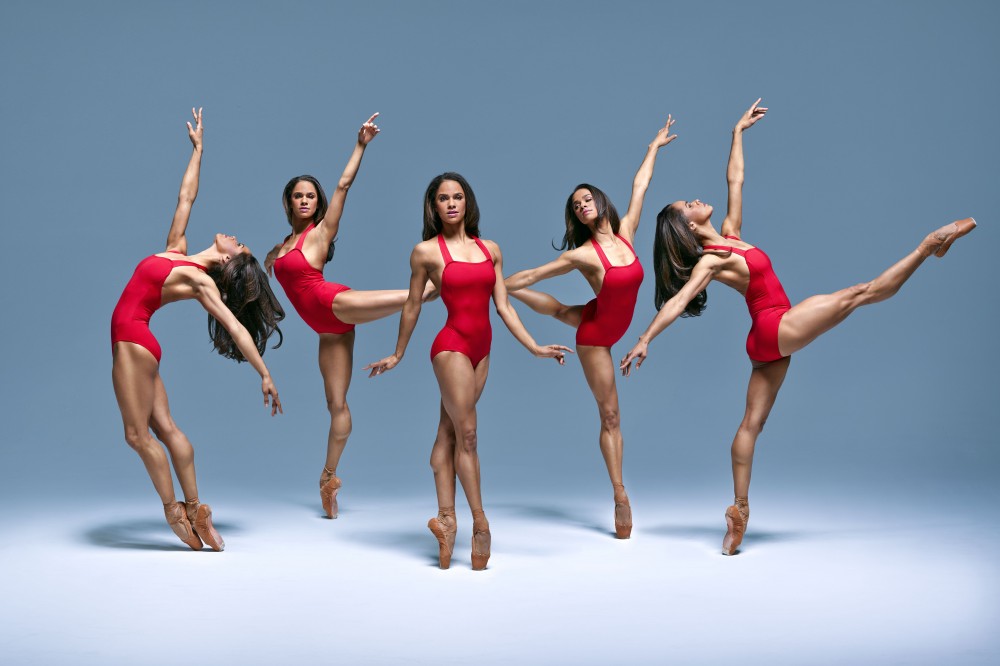In 2007, Misty Danielle Copeland became the first African-American ballerina to be a principal dancer with the American Ballet Theater (ABT) in twenty years. Since then, Misty Copeland has become a recognized icon for breaking down barriers in the art of dance. All her determination and resilience was built on the work of her mentor, Raven Wilkinson. Wilkinson was an African-American ballerina performing in the early days of the Civil Rights Movement. “She’s been through so much more than I could ever imagine, in the 1950s and experiencing racism in that time. It just felt like, ‘I can do this,'” Copeland expressed.1 Misty Copeland knew racism was not going to stop her from chasing her dreams.
As a young child, Misty Copeland expressed herself in the form of dance and instantly fell in love with the art. With her family’s hardship, dance was her escape and all her worries went away. Some of these worries included a lack of finances, a lack of comfortable living conditions, and a mother constantly changing boyfriends.2 Dance offered Copeland a way to relax and forget about all her problems. A prodigy by the age of thirteen, she surpassed the other dancers even with the many years they had ahead of her.
Once her training became more intense, Copeland began competing and receiving scholarships. At age fifteen, she was accepted with a full scholarship to the San Francisco Ballet’s Intensive Summer Program. In 2000, Copeland was also named the ABT’s Coca-Cola Scholar. After the program, the ABT invited Copeland to be part of their own studio company. She was the only African-American woman out of eighty dancers, an impressive feat since she was often challenged by her race and physique.3 “I had been told to pancake my skin a lighter color to fit in with the rest of the company,” she wrote.4 Nonetheless, she rose up with her extraordinary skill, and the lack of racial diversity came to the forefront, beginning to make waves in the ballet world.

Stephanie Webre challenged the status quo by casting two African Americans to play the leading roles in Swan Lake: Brooklyn Mack and Misty Copeland. Copeland and Mack were exquisite for their dancing. However, their performance was also admired for Webre’s ethnic inclusiveness, because dancers of color rarely get the chance for leading roles. According to Karen Sparks: “Many companies and schools endorse retrograde aesthetic values that place dancers of color at a disadvantage in the realms of hiring, castings, and promotions.”5 This discouraged African-American dancers from continuing on and studying ballet. For these reasons, there have been insufficient breaks for dancers of color.
After two decades, Misty Copeland became the first African-American soloist dancer to perform for ABT. Her story quickly made her a role model. “It made me feel really empowered not to let the negativity of racism even to this day affect me and my career. I can be strong and persevere and allow my talent to shine beyond the color of my skin,” she wrote.6 Misty Copeland became an advocate for “diversifying the field of ballet and creating access for dancers of varying racial and economic backgrounds.”5
Since receiving a leading role, Copeland has served on the advisory committee for the ABT’s Project Plié, which is a program “to increase racial and ethnic representation in ballet that offers guidance to dance instructors in diverse communities around the United States.”8 Project Plié’s objective is to discover the next “Misty Copeland” and invest in his or her training. The program is made up of a combination of corporations within the dance community to provide scholarships and many opportunities for dancers of color. Project Plié offers internships to encourage many dancers of various backgrounds to pursue their dreams of becoming professional ballerinas. In order to obtain a scholarship or internship, the student must attend many auditions and attract the attention of the advisory committee. Once selected, Project Plié interns are eligible to receive a scholarship to live during their time in New York City. The scholarship consists of roundtrip transportation, a metro card, and housing assistance. This organization could not be what it is today without Misty Copeland’s determination. She continues to advocate for dancers of color and dancers of unprivileged backgrounds to pursue their dreams of becoming a dancer. Today, several ballet companies have made progress in changing racial inequality in ballet. Just within the last decade, many companies have recruited dancers and have begun to change the complexion on the stage. Misty Danielle Copeland is breaking the racial barriers and paving the way for future ballerinas.9

- Encyclopedia Britannica, December 2014, s.v. “Misty Copeland,” by Naomi Blumberg. ↵
- Misty Copeland, Life in Motion: An Unlikely Ballerina (New York: Aladdin, 2014), 20. ↵
- Encyclopedia Britannica, December 2014, s.v. “Misty Copeland,” by Naomi Blumberg. ↵
- Misty Copeland, Life in Motion: An Unlikely Ballerina (New York: Aladdin 2014), 20. ↵
- Encyclopedia Britannica, June 2015, s.v. “Addressing Racial Diversity in Ballet,” by Karen Sparks. ↵
- Misty Copeland, Life in Motion: An Unlikely Ballerina (New York: Aladdin 2014), 127. ↵
- Encyclopedia Britannica, June 2015, s.v. “Addressing Racial Diversity in Ballet,” by Karen Sparks. ↵
- Encyclopedia Britannica, June 2015, s.v. “Addressing Racial Diversity in Ballet,” by Karen Sparks. ↵
- Rhonesha Byng, “Misty Copeland Inspires Project Plie, A Diversity Initiative Launched By ABT To Fine More Black Ballerinas,” Huffpost, September 2013, https://www.huffingtonpost.com/2013/09/19/misty-copeland-project-plie-_n_3950827.html. ↵



60 comments
Yadira Chavez
I love this article because it is so empowering for women of color, who still need to try harder than everyone else to be considered equal. Any story such as this makes me smile, and even though I have never heard of Misty Copeland before, I am proud of her. Ballet is an extremely difficult sport with a harsh history for being intolerant of newcomers. Of course, her skill is also thanks to her amazing role model.
Hailey Stewart
As a child, I always had the aspiration to become a ballerina. Seeing Misty Copeland gave me hope and such positive representation as an African American woman that made me believe in myself. This article does a great job of shedding a light on the struggles that all African American women have to face to be on the same level as the majority of the population. Ballet in particular has struggled with diversity because of the strict constructs of what a ballerina should look like. In the end, Copeland is a true inspiration for women of color in all fields.
Valeria Perez
This is an amazing story! A great teacher will always produce a great student. It is amazing that Copeland was able to learn from such a powerful woman and that she inspired her to keep on dancing despite the many obstacles. Copeland’s potential and determination are inspiring. I truly admire how she did not let her past dictate her future and that she is so involved in spreading her success with other minorities that want to be part of the ballet community.
Gabriela Ochoa
I have briefly heard of Misty Copeland but never knew her whole story. Its pretty cool that she paved a way for African Americans in the Ballet world. The fact that she was already so talented and making a name for herself. I liked that she made it a point to inspire the young women that have the same dream as her. I also liked that they have a program that was made to diversify the ballet world.
Nathalie Herrera
If I was considered a prodigy at age thirteen I wouldn’t stop at what I loved and what I was good at either. Misty Copeland was just this and was able to beat all odds by overcoming hardships in order to make her dream a reality. Despite the racists remarks she encountered she was still able to live out her dream and put her passion before the hatred of others. This is an inspirational story that may help others recognize to never give up on the passions they have.
Katherine Watson
Misty Copeland is one of the greatest names in modern day dance, and her accomplishments only makes me proud to call myself a dancer. She has broken so many barriers for girls who believed that they could not see themselves on the big stage because of their skin color, teaching everyone that skill and passion should be what defines a person. She is not your typical ballerina, and I could only hope to be half the dancer she is. May her legacy live on for generations of dance to come.
Caden Floyd
Misty Copeland should be an inspiration and role model for African American girls all around the country. She became successful and was so talented because she was very good at expressing herself in her dances. The fact that she received a full scholarship and was accepted to the San Francisco’s Intensive Summer Program at the age of fifteen. I understand where she’s coming from when she said that dance was an escape from her personal hardships and emotional battles. This article introduced Misty Copeland to me and allowed me to learn a lot about her.
Alexis Martinez
I loved reading this article! I think the author did a great job telling Misty Copeland’s story and struggle of being an African American ballerina. I had never heard of her before reading this article but I found it inspirational. You can tell that she is talented and graceful and fought hard for her dreams.
Daniela Cardona
Its sad to hear how race is a factor, even to this day, in people’s dreams. I think Misty Copeland is a great inspiration for all children of color and she is the true definition of following your dreams. I love that she didn’t stop with her. She made it a point to spread the wealth and look out for her community which shows her true nature.
Aneesa Zubair
You did a great job conveying Misty Copeland’s struggle and eventual success as an African-American ballerina. I was amazed to learn that she was a prodigy at the age of thirteen, and that she succeeded in her career despite facing so many challenges. I’ve never seen her perform, but your pictures and writing alone gave me a sense of how talented and graceful she must be.